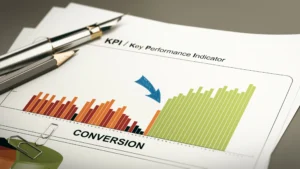Many outstanding products and services often go unnoticed due to the underwhelming performance of the eCommerce platforms they are offered on. The question arises why do visitors abandon these online stores and never return? Factors such as
- Lengthy loading times
- Slow responsiveness
- Poor mobile performance &
- Inconvenient payment options
Is your eCommerce shop facing these challenges? Below are some valuable tips to ensure your website becomes a successful selling platform.
While countless websites offer similar functionalities, only a handful achieve remarkable success, such as Facebook, Uber, and Airbnb. What sets them apart? They evoke emotions, provide unforgettable user experiences, and excel at solving their core tasks better than competitors.
This principle is fundamental to web design for any website, be it eCommerce or otherwise. Beyond aiding customers in achieving their primary goals, your online shop should deliver an excellent user experience, leaving a lasting impression and encouraging repeat visits. A well-structured, fast-operating website with a seamless UI/UX is crucial for business success, facilitating increased sales through well-planned marketing strategies.
Common obstacles to achieving such a site include inconvenient navigation, insufficient company service information, poor customer support, website bugs, lack of convenient payment gateways, long loading times, and subpar UI/UX. Below, we outline how to overcome these challenges and enhance sales figures.
-
Intuitive Website Navigation
Implement best practices for navigation, such as placing a search bar at the top right, using dropdown menus for precise filtering, incorporating mega menus with textual or image descriptions, and utilizing flyout menus for mobile-friendly websites. Important eCommerce sections should have shortcuts for easy access.
-
Appealing Layout
Tailor your website layout to cater to your target audience. Choose colors and designs that align with the preferences of your demographic. Visual descriptions of products are more effective than excessive text, as they allow customers to quickly grasp the content of a category.
-
In-Depth Product Descriptions
To enhance sales, ensure that your product descriptions address as many customer queries as possible and are accompanied by ample photos of the merchandise. Avoid the temptation to be lazy by copying descriptions from other sites, as this can significantly harm your website’s ranking. Instead, prioritize creating original content. Essential elements for effective product descriptions include:
- High-definition photos offering a 360-degree perspective
- Comprehensive lists of available sizes and colors for each product
- Availability checkers for items
- Supplementary product sections featuring items like protective glasses, casings, chargers, and headphones for smartphones
- A dedicated customer review section
The latter is particularly crucial, as unbiased reviews from other customers can serve as a significant motivator for potential buyers. It is important to refrain from populating your website with pre-written feedback, as this practice is not conducive to good business. Genuine and relevant feedback from your customers serves as one of the most effective drivers for improving the UI/UX of your website.
-
User-Friendly Interface and Experience
Minimize clicks from the main page to the shopping cart, regularly check the performance of features and categories across browsers and operating systems, and conduct A/B testing to ensure any new changes enhance the user experience.
-
Devoted Customer Support
Prioritize customer interactions by offering reliable support before, during, and after the payment process. Going the extra mile for customers, such as replacing damaged items during transportation, fosters positive relationships and word-of-mouth advocacy.
-
Bug-Free Website
Quality assurance is essential. Utilize online tools or hire specialists to fine-tune your website and eliminate bugs. A buggy website in the digital age is a major deterrent for potential customers.
-
Page Load Speed Optimization
The quality of your products may be outstanding, but a slow-loading website can undermine their appeal. Millennials, in particular, are accustomed to swift-loading websites, with 50% of Internet users expecting the main page to load within 2–3 seconds. A staggering 80% are likely to abandon a slow-loading site permanently.
To address this issue, consider the following steps to enhance your page load speed:

Utilize tools such as Google Webmaster Tools, Page Speed Online, and the Yoast Google Analytics Plugin for WordPress sites to assess your website’s speed.
Optimize load times by compressing images using services like TinyPNG or similar web tools.
Implement Gzip compression for HTML, CSS, and JS files, resulting in a 3–4 times reduction in website load pages.
Harness the power of Content Delivery Networks (CDNs) like Amazon Cloud-front to ensure rapid access to the nearest geographically located server for every customer.
Improve efficiency by deploying CSS and JS files to external sources, allowing the visitor’s browser to cache them once instead of loading them anew with each visit.
In conclusion, these tips only scratch the surface of website optimization. Consistent attention to these key points will ensure your customers enjoy a smooth browsing experience on a fast-loading website with appealing design, informative product details, and responsive customer support – a formula for driving up sales!
Have we missed any crucial points? Feel free to share your thoughts in the comments below! For enhanced services, please reach out to us.






Leave a Reply